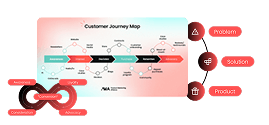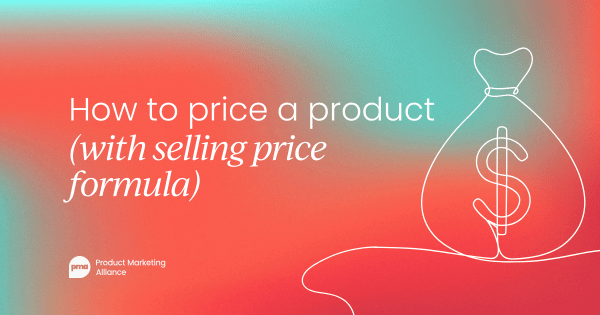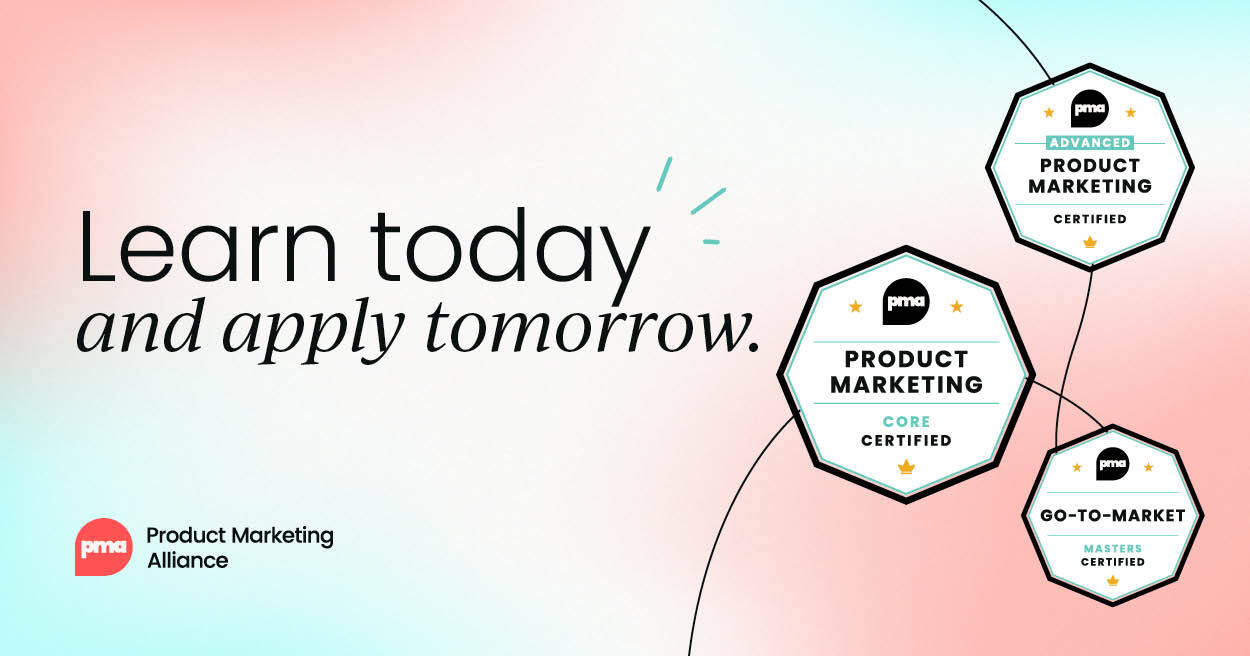Let's start with a simple question: What exactly is a marketecture?
You guessed it – it’s a portmanteau of “marketing” and “architecture”. This visual representation of your market offering illustrates how everything works together as a system.
I like to think of it as a layer cake. If cake isn't your thing, you can imagine puzzle pieces or Tetris blocks instead. Each layer or piece represents an element of your market offering, all coming together in a single visual that shows how they coordinate with each other or align with specific personas.
Think of the “architecture” part as the science behind baking a cake – specific ingredients combined in just the right way to make everything work. It’s the technical foundation.
The “marketing” part is like the icing on the cake. It’s how you describe the flavors in a way that makes someone actually want to take a bite.
If that metaphor feels a bit too abstract, here’s the bottom line: marketectures were born out of the need to take complex architecture diagrams and make them more digestible for business audiences.
How not to create a marketecture
Now, let’s talk about a common pitfall in marketecture design. Take a look at this architecture diagram. Does it look familiar?
This was likely created by someone with a technical background aiming for 100% accuracy. They've crammed in every product, capability, and connection point – essentially everything in one place.
But here’s the issue: it’s not telling a story. For a salesperson, this would be nearly impossible to explain, and for a customer, it’s challenging to see where they fit into this maze.
Now, let’s look at that same product offering, but reimagined as a marketecture:
You’ll notice that while there’s still a lot of information, it’s been organized in a way that makes it easier for customers to see where they fit in. There’s a story being told, and that’s the key difference between an architecture diagram and a true marketecture.
It’s easy to overcomplicate your marketecture by trying to represent all your products, services, and capabilities at once – but that’s a quick way to confuse people.
Instead, it’s better to pick one focus. If you need to layer in services along with products, that’s okay, but the goal should always be simplicity. The clearer and more focused your marketecture, the more effective it will be.
Why you need to get your marketecture right
Let’s take a moment to think about who benefits from a great marketecture.
Sales always benefits because they can use their marketecture slide to help make a sale. Marketing teams often take advantage of marketecture too. Executives can use it to discuss business strategy. And of course, the end buyer benefits because it gives them a better understanding of what they're purchasing.
So what are the stakes of having a great marketecture? Really, the question is: what happens if your marketecture sucks?
Let's say a salesperson is presenting your marketecture and it looks like this:
As a prospect, I'd look at it and think, “That looks like a perfectly good strawberry. I know exactly what to expect from it."
But wait, it's not a strawberry…
It’s a cake!
That strawberry exterior is just the marketing shine, the frosting on the cake that makes it look beautiful.
If your salesperson doesn't understand and explain that it's actually cake, with all its complexity and layers inside and how everything works as a system, it could become entirely misleading. They could end up oversimplifying or overcomplicating your product offering and totally confusing their audience.
For your marketecture to truly act as a conversation slide, your team needs to know they're describing the whole cake, not just the strawberry frosting.
At the end of the day, you want everyone to be telling the same story. Your strategy falls apart if everyone in your organization is saying different things about what you do.
If your various internal teams don't have a solid marketecture, they'll all speak about your products and offerings in their own special way. That type of control loss can cause a lot of problems. When your message is inconsistent, it weakens your ability to stand out in the market.
Good marketecture makes it easy for everyone to describe what you offer and how it works. It gives everyone a shared point of reference so they tell a coherent story. That also makes training new reps much easier and it gives you control over how your customers perceive your offerings.
Collaborating effectively to build great marketecture
When it comes to creating marketecture, product marketers typically lead the charge, but they can't do it alone. They need to collaborate with others, including product management to ensure everything makes sense on the back end, engineers to get their perspective, and it's always great to have buy-in from the CMO.
With all these cooks in the kitchen – all with strong and sometimes conflicting opinions – developing marketecture can get complicated.
So, you might start with a strong marketecture – focused, on-brand, and easy to understand. But as you gather feedback from different stakeholders, each with their own perspective, the original story can become muddled.
After a bunch of revisions, the marketecture might not make sense anymore; the story you were trying to tell might get lost. This is an all-to-common problem.
Now, there’s no denying that product teams, engineers, and marketing leaders offer valuable perspectives. The challenge lies in taking their opinions into account without losing the core message. So, how do you manage that?
The key is to aim for roughly 80% accuracy.
That's right, your marketecture is never going to please everyone, and the sooner you can accept this, the easier your life will get. If you make it clear from the start that perfection is impossible, you can take some of the emotion out of the process and get everyone aligned more quickly.
Always try to keep things as simple as possible. If you can simplify your process from the very beginning and get stakeholders aligned from the get-go around what the final intention of your marketecture is, it'll really help you along the way.
This doesn't mean ignoring feedback and insight from other stakeholders. It's more about acting as a filter to apply the right information and feedback to make sure the marketecture is still telling the right story.
The importance of iteration
Building a marketecture is a very iterative process – and that’s great for your organization. Don't be afraid to try all kinds of ideas to get to the right solution, and most importantly, to revisit your marketecture regularly.
If you do that, it means you're revisiting what your full stack looks like, checking for gaps, and trying new ways to talk about your product offering. It just keeps you from becoming stagnant.
As you sketch out different possible marketectures, it's always smart to keep a safe option in your back pocket. Showing ideas that range from “strawberry” to “cake” can be a really helpful way to brainstorm and come up with an idea that will please most of your stakeholders.
What makes a marketecture great?
To recap, a good marketecture clearly shows the value of your solution, is easy to understand, and is about 80% accurate.
But what makes a marketecture great? It builds on those fundamentals by being story-driven and aligning with your overall messaging. The sum of the parts should resonate more than the individual elements.
If your team remembers how to communicate the marketecture and prospects remember its key points, that’s great. But if your marketecture is adopted and actively used across the organization, that’s truly exceptional.
To make your marketecture memorable, it should reflect your organization’s unique perspective – your special sauce. The most impactful marketectures are driven by a strong narrative and your company’s point of view.
Ideally, the marketecture should fit on a single slide as a conversation piece, but it must still align with your key messages. The messaging in the deck leading up to that slide should be cohesive and build up to it.
Examples of great (and not-so-great) marketecture
I'm going to walk you through a few examples of marketectures. As you look at these examples, I want you to keep this question in mind: are these marketectures more strawberry (all shine, no substance), or are they more cake (shine and substance)?
Example #1
Here’s a marketecture we created for one of our clients.
Image courtesy of GhostRanchWhat I love about this marketecture is how clearly it shows where each audience fits. It has a layered look without being just a stack of boxes, which makes it more visually engaging. The pro and fintech elements wrap around the core products, making it clear that the core product is central while the pro and fintech offerings are like the icing on the cake, adding specialized value.
So, how would you rate this one – more strawberry or cake?
I think this marketecture blends both shine and substance, striking a pretty even balance between the two. That’s the key to a successful marketecture – it’s easy on the eye and covers the essential elements of this product offering without being overly complicated.
Example #2
This marketecture is a great example of how to present a solution clearly and effectively across multiple slides.
It starts with a simple, overarching view, giving a bird's-eye perspective of the entire stack. Following a classic layer cake style, the platform forms the base, followed by administration, data and analytics, products, and finally, external applications at the top.
Initially, this marketecture leans more toward the "strawberry" side of the spectrum – it’s visually appealing and polished, but some aspects could still be open to interpretation.
However, as the marketecture progresses, it opens up those layers to reveal the specific actions and features within, kind of like dresser drawers opening to reveal what's inside. This added detail helps to clarify how everything fits together, building on the first slide.
The final presentation strikes a nice balance between “strawberry” and “cake,” combining visual appeal with a clear but detailed explanation.
Example #3
This a marketecture we designed for Oracle. It was pretty polarizing here at GhostRanch, but I love it. That said, we also presented a safer option, in case the client didn’t like this one.
You might be surprised, but I think this is a pretty perfect balance of strawberry and cake. At a glance, it looks a little bit more strawberry because it's so illustrated, but there's a great visual hierarchy, and the layers of information express a lot about what the offerings do.
Key takeaways
We’ve covered a lot of ground! To wrap things up, here are a few key takeaways on developing your marketecture:
- Find a balance between marketing shine and product substance (or strawberry and cake).
- Think about who will be using it and what could be left up for interpretation.
- Your story is your strategy. If you can get everyone in your organization telling the same story, it'll help lock in strategic alignment across the board.
- Your marketecture will never be perfect. Make as many people happy as you can without sacrificing simplicity.
- Iterate, iterate, iterate. Your marketecture is a living, breathing document, and you should update it and brainstorm around it all the time.
This article is based on Allie Wilson’s talk at the Product Marketing Summit in New York. As a PMA member, you can enjoy the complete recording here.


















 Follow us on LinkedIn
Follow us on LinkedIn




.svg)
Start the conversation
Become a member of Product Marketing Alliance to start commenting.
Sign up now